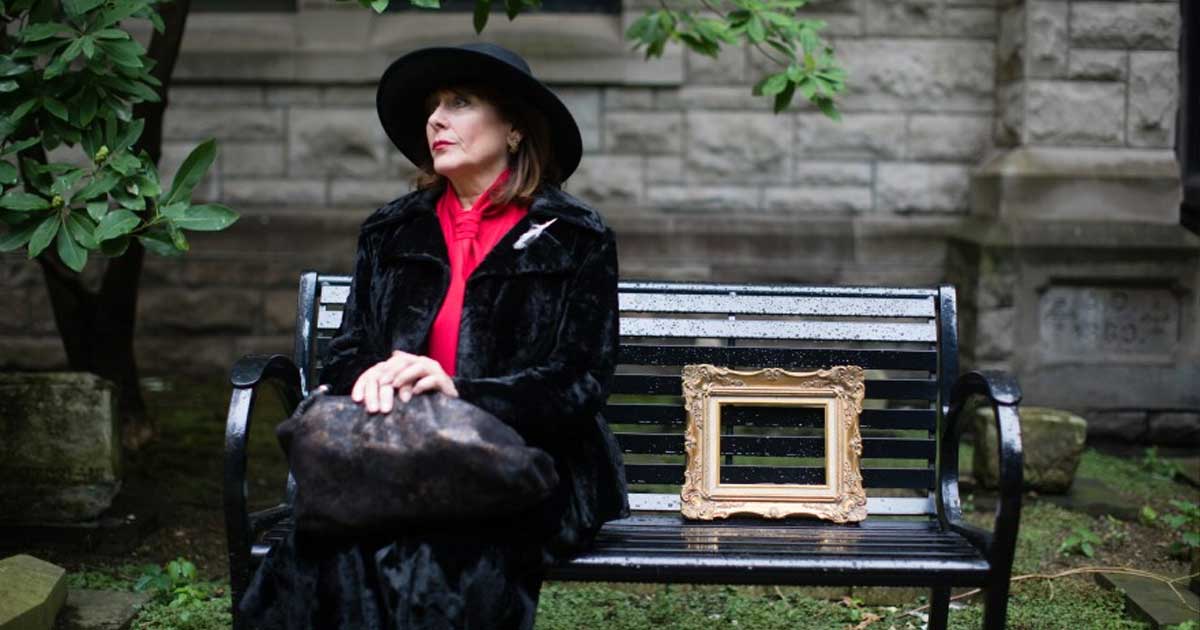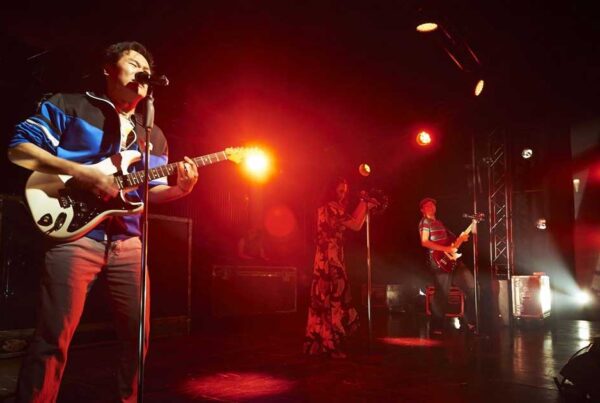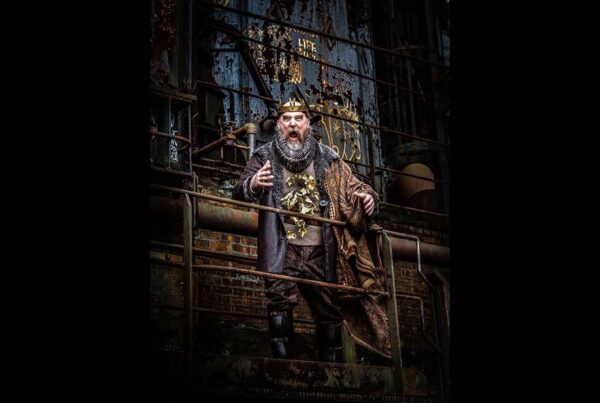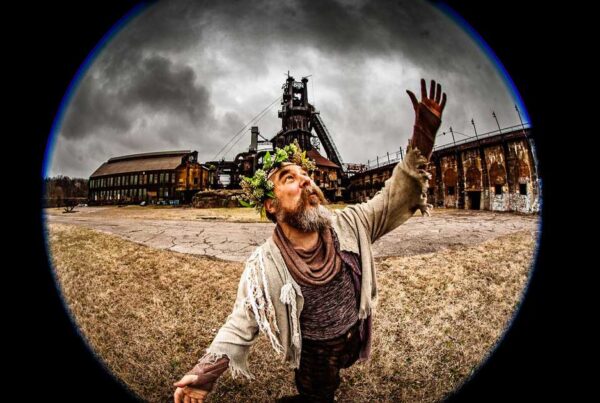
90.5 WESA – In 1856, British artist Henry Wallis completed “The Death of Chatterton.” The oil painting was Romantic with a capital “R”: a loving depiction of 18th-century poet Thomas Chatterton, who’d just committed suicide by ingesting arsenic. Chatterton, age 17, lays draped on a bed, washed in dawn light.
On the floor, the emptied vial of arsenic. In his cold fist, scraps of paper, presumably bearing his unsold writings.
The painting, like Chatterton’s legacy as an unappreciated genius, has inspired many artists and poets – including Peter Ackroyd, the British author whose acclaimed 1988 novel Chatterton asks, “What if Chatterton didn’t really die?” Ackroyd’s story depicts Chatterton in the 18th century; Wallis and his artist’s model, poet George Meredith, in the 19th; and, in the 20th, a poet and an aging novelist who investigate Chatterton’s fabled suicide.
That novel, in turn, captured the imagination of Karla Boos. The Quantum Theatre artistic director loved the way Ackroyd played with ideas about the authentic and inauthentic in life and art. Now Boos has adapted Chatterton into a full-scale immersive play, its world premiere to be mounted on (or rather, in) a grand stage: downtown Pittsburgh’s Trinity Episcopal Cathedral.
The English Gothic church — on Sixth Avenue, right across from the Duquesne Club – was built in 1872. It’s known for its 200-foot spire and its atmospheric churchyard, containing the faded and crumbling marble monuments of some of the oldest marked graves in Pittsburgh. Inside, it boasts high, vaulted ceilings, acres of stained glass, and two stories of backrooms and passages little known to the public.
It’s ideal, in other words, for a theatrical work that asks audiences to follow a dozen characters through three different centuries in search of the answer to literary and historical mysteries.
Boos adapted Chatterton with help from actor Martin Giles, who co-stars in this world premiere production. “It’s all about forgery and theft of intellectual property, what’s real and what isn’t, in the art world, in the literary world, and in reality,” said Boos.
The show boasts a cast of top local talent. Chatterton, played by Jonathan Visser, guides audiences through the church’s sanctuary, telling the story of how (in his own hometown church) he discovered the ancient writings that inspired him to start writing poems in the voice of a medieval monk named Thomas Rowley. (The imposture was discovered, possibly a reason for Chatterton’s downfall.)
Other characters include Wallis (played by Giles), who paints Meredith (Tim McGeever) as the dead Chatterton, even as Meredith’s wife pursues an affair with Wallis. And fictional 20th-century novelist Harriet Scrope (Helena Ruoti) teams with poet Charles Wychwood (Tony Bingham) to research whether Chatterton really died – Wychwood owns a portrait of a man he believes to be Chatterton, painted three decades after the poet’s supposed suicide – even as Scrope faces questions about misrepresenting her own work.
The sprawling play features a cast of a dozen. Audiences should wear comfortable shoes. Each night’s crowd will be split into smaller groups, each following a different path through scenes going on simultaneously throughout Trinity in rooms (choir room, etc.) variously made over as a study, a living room or art gallery. Sometimes, patrons will be signaled to depart a scene that will seem not to have ended yet, or happen upon another already in progress. In any case, ticket-holders should expect to climb (and descend) a few flights of stairs.
“It’s just perfect to take people up there where they would not normally get to go,” said Boos.
Giles said it’s fun for actors to play all the different rooms.
“Some of them are big, and some of them are small. Sometimes your voice echoes – like the sanctuary, it’s fantastic, it’s like an actor’s dream,” he said. “And sometimes you’re playing in this really intimate little room.”
At the end of act one, the audience will find itself in a space that does double-duty as a dining room. That’s because tickets to Chatterton include a full dinner, prepared by a different local chef each week of the show’s six-week run. (The well-known chefs include Kate Romane, of Black Radish Kitchen, and Bill Fuller, of big Burrito Restaurant Group.) And afterward, the audience can digest act two — and some more provocative ideas about authenticity in art and life.
Boos emphasized that Chatterton is not history. “What really happened is not the point here,” she said. Rather, the work explores how, though no creation can be purely “original,” the way creators build on the past in meaningful ways. “Things have value through their connection,” she said…




